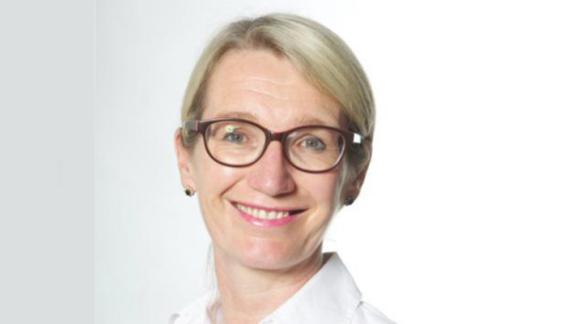The war on cancer: what you need to know

The Secretary of State for Health and Social Care has declared a ‘war on cancer’ to improve care and outcomes for cancer patients. The rallying call came in response to concerns over recent waiting times performance and the impact of workforce shortages. A vision to improve outcomes for cancer is in development, with a ten-year cancer plan also on the way following a public consultation and call for evidence.
The recently published elective recovery plan sets targets to reduce diagnostic waiting times and deliver the faster diagnosis standard. At least 75 per cent of urgent cancer referrals are to receive a diagnosis within 28 days by March 2024, with the ambition to return the 62-day backlog to pre-pandemic levels by March 2023. The recovery plan also calls for a collective focus on the prioritisation of referrals, diagnosis and treatment for those with suspected cancer.
Amid the flurry of recent coverage, this briefing provides the background to the announcements – the key statistics on cancer care, where the NHS is in the recovery of services post pandemic and what our members are doing to speed up the process up. We also reflect on what more can be done nationally by the government to support the successful implementation of new plans.
Key points
- The NHS is now seeing the highest recorded numbers of cancer referrals and first-time consultant appointments, with high volumes of patients, more demand and increased treatment complexity due to late presentations. Despite the challenges, our members have also put in place actions to counteract these issues to continue to deliver cancer services.
- We welcome the Secretary of State’s development of a new ten-year cancer plan and the prioritisation of cancer referrals, diagnosis and treatment in the elective recovery plan. The cancer plan should respond to the pressures and impact on the whole system and cancer pathway exacerbated by the pandemic. It should also go some way to address the longer-standing infrastructure constraints and challenges, including primary care capacity, capacity constraints in diagnostics, histology, pathology, therapies, and shortages in the specialist cancer workforce. But it must also invest in sustainable public health funding and targeted preventative programmes that reduce cancer inequalities.
- The decade-spanning plan must respond to the immediate, current position, addressing the gap that is opening between demand and the resources needed to deliver. Without this, it is highly unlikely that performance targets will improve in the short term. A package of measures is needed to address the immediate impact and pressures in the system.
- In the meantime, the government must continue to support the public and the NHS with positive public health messaging that encourages people to attend services. Namely, that the NHS is open, that people should see their GP as soon as possible if worried about symptoms, and that they should attend cancer screening when invited.
Overview: what’s happening with cancer care?
The NHS is now seeing the highest recorded numbers of cancer referrals and first-time consultant appointments, with high volumes of patients, more demand and increased treatment complexity due to late presentations. This sits alongside a decline in performance on waiting times standards while the service continues to triage, refer, diagnose and treat cancer. There is a gap opening between demand and the supply of treatment resources available to deliver.
Increased demand
The demand for first cancer appointments has increased considerably, with the latest data showing over 246,000 first consultant appointments in November 2021, the highest on record. GP referral figures show a marked impact of the pandemic on how people access services, with April 2020 seeing the lowest ‘first appointment’ figure recorded since 2011 and succeeding months remaining low.
There are various drivers for this, including that patients may have been less likely to come forward due to a fear of the virus or to avoid putting further pressure on health services. We believe some of these patients are now being seen as the data shows the busiest six months for first appointments since records began in 2009 were all in 2021, with a considerable increase in GP referrals:
This chart shows the increase in first consultant appointments in 2021, particularly in the second half of the year, after the drop at the onset of the pandemic. There is a 29.4 per cent increase in volume from February 2020’s figure (190,369) pre-pandemic to November 2021 (246,316).
Challenging performance
The increased demand alongside COVID-19 and the omicron wave have resulted in some challenging performance metrics. The percentage of patients seen within two weeks from GP urgent referral to first consultant appointment slipped below 80 per cent for the first time since records began (78.6 per cent in the latest figures, for December). Pre-pandemic, performance against this standard had only slipped below 90 per cent in two months (both times in 2019), but has now done so in 15 of the 20 months since April 2020:
The percentage of patients having a first treatment within one month of a decision to treat has remained high however (in December 2021 it was 93.4 per cent), albeit with a slight drop from pre-pandemic levels (in 2019, the average month was 96.1 per cent). The volume of these first treatments has bounced back following a drop earlier in the pandemic but has not risen considerably above pre-pandemic levels. In December 2021, there were 26,150 which is the nineteenth highest on record (with months seeing over 28,000 treatments in 2018, 2019 and in March 2020).
Data is also collected from hospitals on the backlog of patients waiting more than 62 days following an urgent suspected cancer referral, which has steadily been rising again after a peak at the onset of the pandemic. This includes those who will not have cancer but are waiting for this to be ruled out, and is an unrevised management data set:
This is then reflected in declining performance against the standard of 85 per cent of patients starting treatment within two months of a GP urgent referral, which fell to 670 per cent in December:
Delivering more care in innovative ways
Our members, the organisations that provide and commission healthcare services, are seeing consistently higher record levels of referrals than ever before, with late presentations and greater treatment complexity. They are also facing challenges and constraints in the system and cancer pathway, including delays in diagnostics, histology, therapies and workforce shortages. Many of these infrastructure constraints existed pre-pandemic but have been exacerbated by COVID-19. However, our members have also put in place actions to counteract these challenges to continue to deliver cancer services. These actions are detailed below.

Top priority is to maintain and prioritise cancer services where possible
- Primary care has remained open throughout the pandemic, continued to prioritise patients with cancer symptoms, and through triage focused on those who need to be seen most.
- Cancer appointments, assessments and treatments continued, with priority given to cancer patients.
- Urgent cancer surgery prioritised over other routine procedures.
- COVID-19 protected areas, cancer hubs and cold sites helping patients continue to receive safe and timely operations
- Community services supporting recovery and post-operative complications.
- New nurse-led two-week wait clinics.
- New treatment pathways, including treatment at home .

Increasing diagnostic capacity
- Additional diagnostic capacity at weekends and extra clinics for two-week waiters.
- Outsourcing histology, chemotherapy and radiology.
- Use of independent sector diagnostics.
- New community diagnostic centres.
- Additional MRI and mobile CT scanning capacity.
- Additional rapid diagnostics services.
- New community breast pain clinics in the community so referrals are seen appropriately.
- Additional symptomatic breast clinics.
- Prioritising imaging for cancer patients and weekly prioritisation focus to identify blocks in the system and deal with them.
- Speeding up simple diagnostic pathways and removing patients who do not have cancer more quickly.

Creating additional workforce capacity
- Recruitment of additional radiographers, endoscopists, theatre, intensive treatment unit and clinical nurse specialists and consultants.
- International recruitment.

Creating additional operating and bed capacity
- Additional theatre capacity.
- Weekend and additional waiting list initiatives.
- Cancellation of all non-cancer, (outside clinically urgent) long waiting and day surgery to prioritise cancer patients.
- Ringfencing beds for cancer – more efficient planning / protection from emergency pressures.
- Additional independent sector clinics and surgery.
- Daily review of patient tracking lists and cancellations.
- Mutual aid across the system and using shared system cancer patient tracking lists.

The service is reaching beyond its traditional boundaries through prevention, screening, local public health and research
- Encouraging patients to come forward for screening and appointments.
- Virtual support sessions for patients.
- Delivery of lung health checks in the community.
- Reassuring the public that it is still safe to attend cancer appointments and urging people to keep their appointments.
- Public health programmes, including smoking cessation support.
- Use of charitable funding - this has enabled one oncology research team to resource additional nursing workforce and further supported dedicated team to supply ground-breaking and life changing cancer research therapies.
Getting back on track
We are calling on the government to close the gap between demand and the resource available to deliver cancer services across the pathway. Our members are doing all they can, with record levels of referrals and finding innovative ways to tackle delays. But they cannot increase activity by almost 30 per cent without additional resources – for this they need government funding and help.
Our members need to be fully involved and engaged in the development of the new cancer vision and plan, which needs to be cross-party in development and sustainable beyond electoral timetables.
They also stress the need for sustained, long-term investment in NHS infrastructure, workforce planning and preventative public health measures. They also ask the government to have honest and realistic messages to the public about current services, reinforcing that if people need services, they will get them. The NHS will always do what it can to provide services to the best of its ability and within the resources it has - but it is not a platinum service. The government should not ‘promise the world’, you will get services that reflect the level of resource invested.
Specific measures are also needed to address the immediate impact and pressures in the system:
- Workforce plan: a sustainable workforce plan that invests in the workforce and looks at different ways of working. Particularly for workforce shortages and capacity in primary care and the cancer workforce key specialist areas
- International insights: Learning from international research and European countries whose patient outcomes are better.
- Addressing inequalities: Have a focus on cancer prevention and targeted public health programmes to address health inequalities
- Fast progress: Ensure the ambition to increase the provision of community diagnostic hubs and networks is achieved quickly. These will need to improve rapid access and be targeted and promoted in the most deprived and disadvantaged urban, rural and coastal areas to reduce inequalities.
- Mobile services: Resources to enable mobile endoscopy services delivered in the community at a regional level.
- Surgical hubs: The establishment of surgical hubs in every region.
- Digital capability: Resources to enable larger scale and centralised digitilisation of services, including digital information services for patients waiting on a diagnosis.
- Tapping into the VCSE sector: Maximising the potential to work with the voluntary and community sector, particularly for patients waiting for diagnosis or for those living with cancer.
- Three-year funding: Sustainable funding, as non-recurrent recovery money, is unhelpful and difficult to spend. To invest in staff properly and to train and embed staff, three-year funding windows would better support the delivery of services.
- Taking a system view: Importance of honest public messages which show the domino effect of COVID-19 for the whole health and care system and the important messaging on vaccination for COVID-19.
- Taking the long view: Recognise the scale of the challenge; a long haul that requires a ten-year plan, with cross-party commitment that extends beyond political terms.


